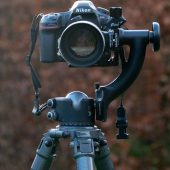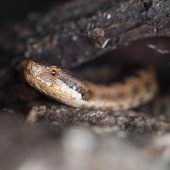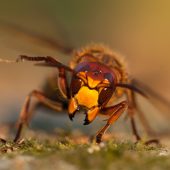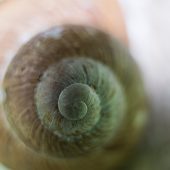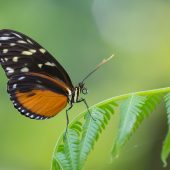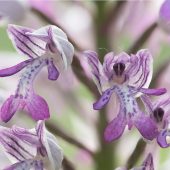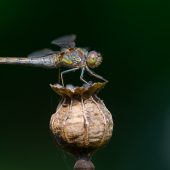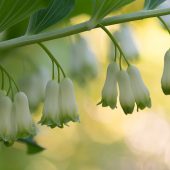The wonderful Nikon AF Micro-Nikkor 200mm f/4D IF-ED lens by Elbert Jan Achterberg (http://www.achterbergbv.nl/fotografie/):
The AF Micro-Nikkor 200mm f/4D IF-ED is by far the oldest lens in my camera-backpack. It was bought, second hand, in 1997 and has been used by me on a F801s, F90x, F100, F5, D2x, D800E and now regularly graces a D850. Despite its age the 200mm is in my opinion still an absolute top performer in terms of image quality and usability. The working distance (distance from front lens to subject) of 260 mm at 1:1 reproduction ratio and its excellent tripod collar are big benefits. The long (for a macro lens) focal length of 200mm really helps with subject isolation.
All images in this article are © 2010 – 2018 Elbert-Jan Achterberg all rights reserved
Backyard Safari
One of the nice aspects of close up nature photography is that you don’t have to go far; the smallest patch of nature is sufficient. Sometimes I don’t even have to leave my house. Many of my favourite close up images were taken within 100 meters of my home.
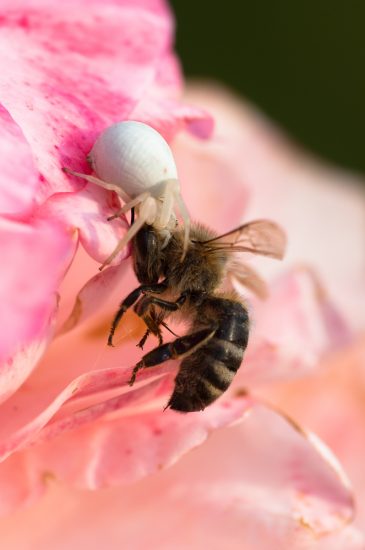
Crab spider (Misumena vatia) with prey on a rose in my backyard. D2x, F/9, 1/125s ISO 100.
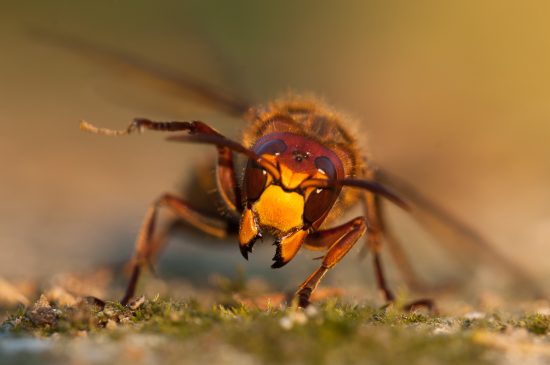
European hornet (Vaspa crabro), backyard. D2x, F/7.1, 1/50s ISO 100.
This hornet was not particularly pleased to see me, another good reason for sufficient working distance.
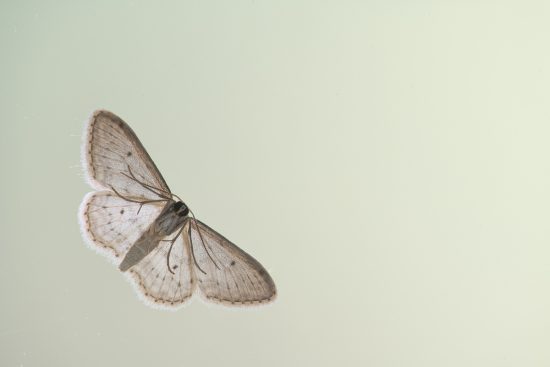
Birch mocha (Cyclophora albipunctata) on living room window. Focus stack of 4 exposures, D850, F/9, 1/4s ISO 64.
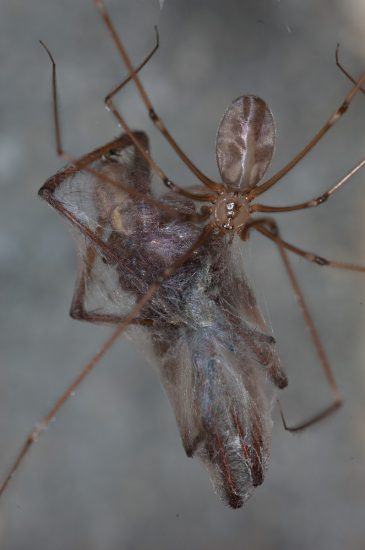
Longbodied cellar spider (Pholcus phalangioides) with prey (another spider) in my garage. D2x, F/22, 1/60s ISO 100, R1C1 flash set and SB600 with soft box.
Working distance
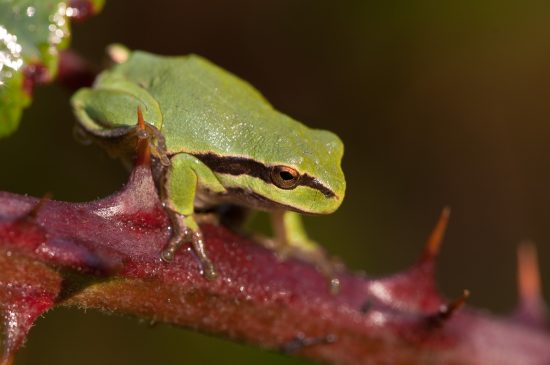
European tree frog (Hyla arborea), Netherlands. D2x, F/8 1/30s ISO 100.
For image such as these the working distance must be as big as possible. Tree frogs are shy and the brambles on which the frogs rest form an impenetrable tangle. Placing the tripod too close will shake the branches and disturb the animal (a long working distance also slightly reduces the number of scratches on my arms after photographing these animals). Even with the working distance that the 200mm affords, moving very slowly is essential to avoid disturbing the little frog.
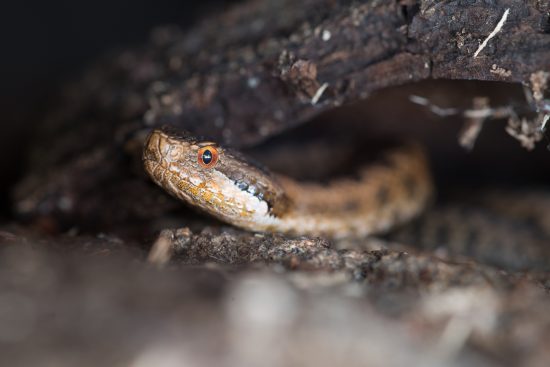
Aspic viper (Vipera aspis) in wood stack, France. D800E, F/8, 1.6s ISO 400.
Another argument for sufficient working distance.
Subject isolation
Busy backgrounds can be distracting. The long focal length of the lens makes creating pleasing backgrounds a lot easier when compared to shorter focal length lenses.
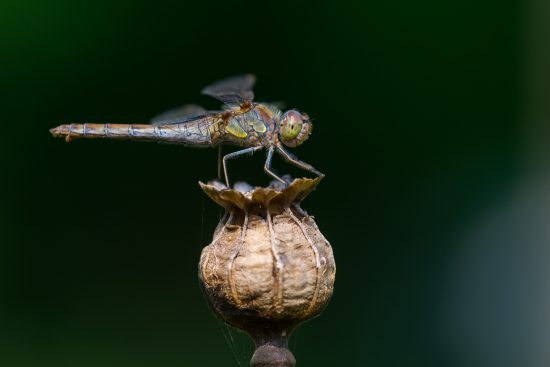
Common darter, Sympetrum striolatum, Backyard. D800E, F/8, 1/320s ISO 200.
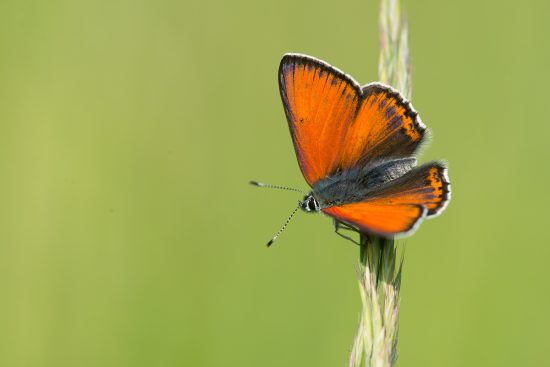
Purple edged copper, Lycaena hippothoe, Eifel, Germany. D800E, F/8, 1/25s ISO 100.
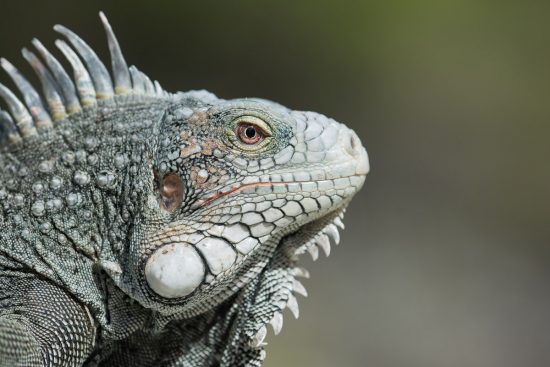
Green iguana (Iguana iguana), Curacao. D800E, F/5.6 1/1250s ISO 100.
Live view
With high resolution cameras such as the D800E and D850 camera shake however minimal will quickly reduce sharpness. To avoid this live view or mirror lock up is in my opinion essential. The D850 has the added bonus of an articulating screen. Since a lot of macro photography takes place close to the ground this is really helpful. Since the screen only flips in one direction images in portrait orientation can still be a struggle.
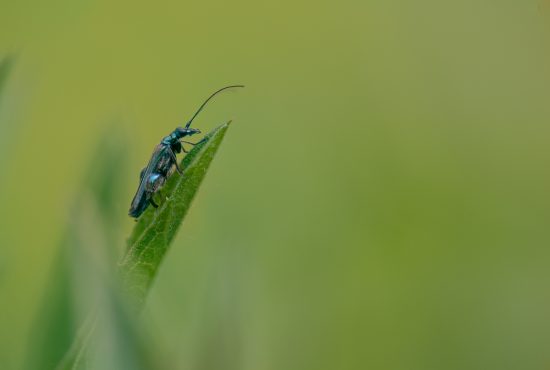
False oil beetle (Oedemera nobilis), Backyard. D850, F/8, 1/200s ISO 400.
Image stacking
Since the micro nikkor is not AF-S the image stacking feature of the D850 is not supported. With practice, stacks can be made relatively quickly by manually moving the focus ring in small increments. The focus peaking feature in live view is a real help when determining how far the focus must be adjusted between shots. Live view, a remote or cable release and a sturdy tripod are essential for this kind of photography.
Sometimes I see recommendations to close the diaphragm as far as possible for close up photography, to F/32 or even further. As far as I am concerned this is bad advice. Only very rarely do I close the diaphragm beyond F/11. All you get with small apertures is busy backgrounds and loss of sharpness through diffraction. The increase in depth of field achieved by choosing a smaller aperture is marginal.
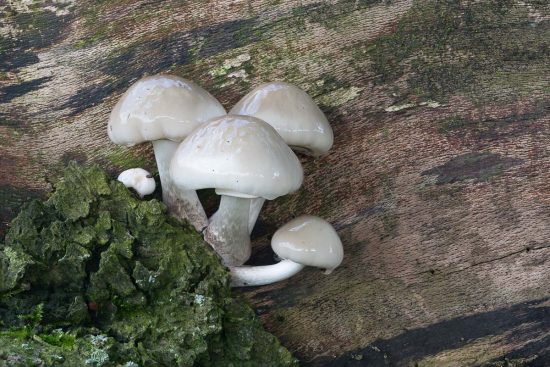
Porcelain fungus (Oudemansiella mucida), NP Hoge Veluwe, Netherlands. Focus stack of 7 exposures, D850, F/8, 1/10s ISO 64.
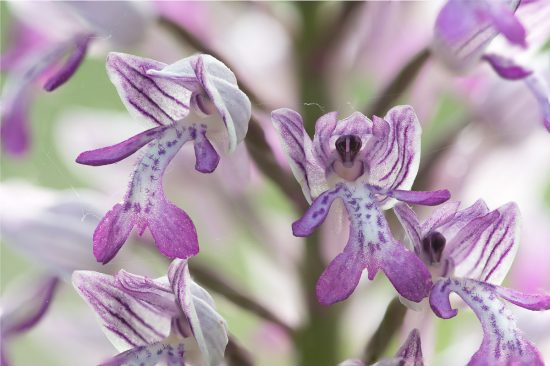
Military orchid (Orchis militaris), Belgium. Focus stack of 11 exposures. D850, F/8, 1/6s ISO 64/
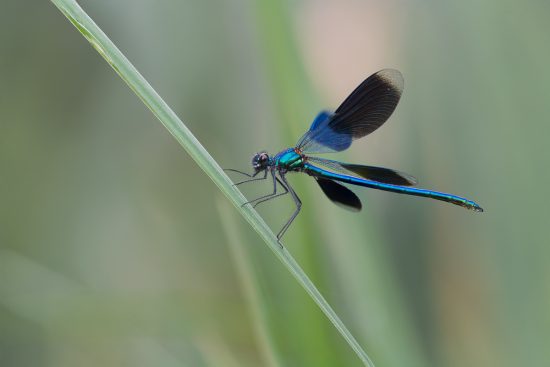
Banded demoiselle, Weidebeekjuffer (Calopterix Splendens), Netherlands. Focus stack of 7 exposures. D850, F/8, 1/80s ISO 800.
With patience and care focus stacking is also possible for insects or other animals, if one accepts many failed attempts.
Focussing
The autofocus of this lens is painfully slow but it can sometimes be used. For me the best strategy is to work in AF-S mode, get approximate focus, release the shutter and then fully depress the shutter in one go so the image is taken as soon as focus is achieved. Waiting for focus and then pressing the shutter often results in out of focus images because any movement backwards or forwards in the time between focus acquisition and shutter release is enough to move out of the depth of field. The images of the Heliconia Butterfly, Giant Orb spider and Tarantula were taken in this way hand held since there was no way to set up a tripod. The amazing image quality at high ISO of the D850 is a real life saver when flash is not an option.
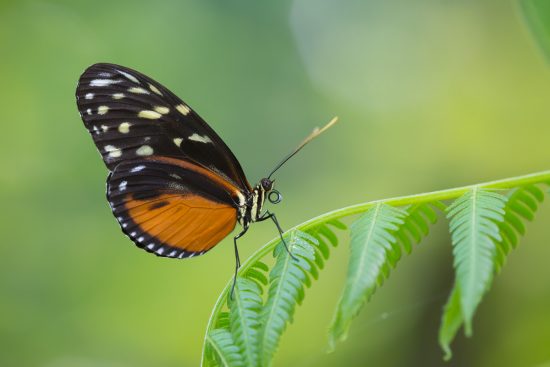
Heliconia Butterfly (Heliconius hecale), Costa Rica. D800E, F/5.6. 1/200s ISO 1600
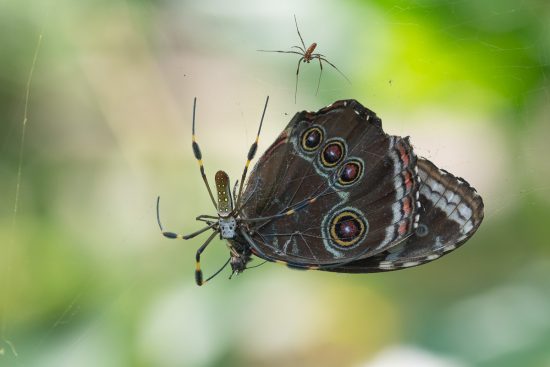
Giant orb spider (Nephila clavipes) with prey, Costa Rica. D800E, F/8, 1/400s ISO 1600.
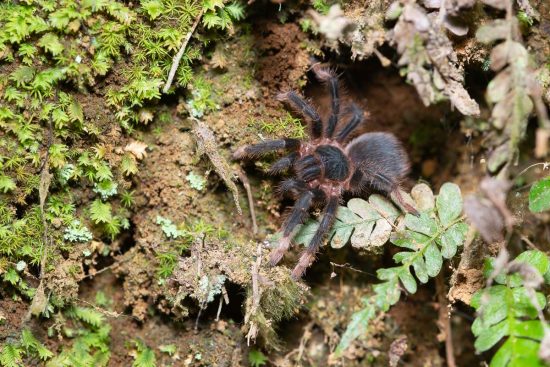
Tarantula (Theraphosidae sp.), Costa Rica. D800E, F/8, 1/60s ISO 400, SB600 flash with soft box.
The lens does have a design flaw that is related to focussing: The plastic selector ring for AF/MF can break. I’ve seen this on three individual lenses. In fairness to Nikon the ring was replaced free of charge on all three lenses, even though they were 5 to 7 years old at the time. This was done for my lens over 15 years ago and it hasn’t happened since, so maybe the construction was improved. While we’re on things that could be better: The metal screw in hood is a pain, it tends to screw on crooked and mine squeaks terribly when I screw it on.
Using a tripod
Hand held shots are an exception to the rule. For 99% of shots the lens is mounted on a tripod. The tripod collar is excellent. I’ve mounted a long arca swiss type plate for better balance and sometimes use it as a primitive focussing rail. The two holes in the mounting plate are a nice touch, I use both to keep the plate securely mounted without any risk of rotation.
A sturdy tripod is essential as is a tripod head that does not sag even a little bit after locking. I use a Gitzo 13448 tripod with a RRS BH55 ball head and a Wimberley sidekick. The tripod can be placed completely flat, the BH55 is extremely stable and the sidekick really helps with quick framing.
For low level images the sidekick can also be used by moving the ball head to the ‘normal’ position which leaves the sidekick horizontal with the lens and camera hanging from it. Of course this is somewhat awkward. You have to take great care when adjusting framing and really tighten the lock on the ball head (and yes both camera and lens have seen their fair share of mud when I forgot to do this properly.
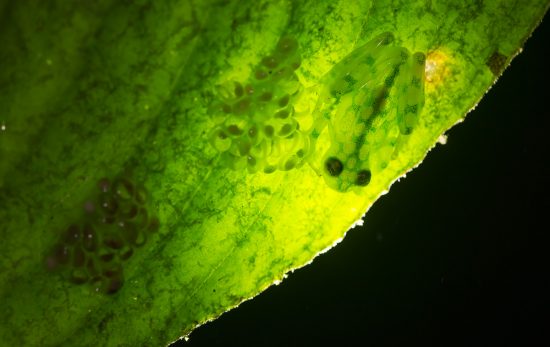
Glass frog (Hyalinobatrachium fleischmanni?), Costa Rica. D800E, F/5.6, 1/200s, ISO 500, led lights.
The glass frog was almost directly overhead and I was standing on slippery rocks in a stream (the eggs are, for obvious reasons, always over water). Tilting the sidekick backward made it possible to achieve this perspective. The frog was lit with two led lights, one below and one above the leaf to highlight its transparency and the pattern on its back that mimics an egg clump in order to attract predators to the frog rather than the real eggs.

D850 with 200mm, RRS BH55 ball head and Wimberley sidekick
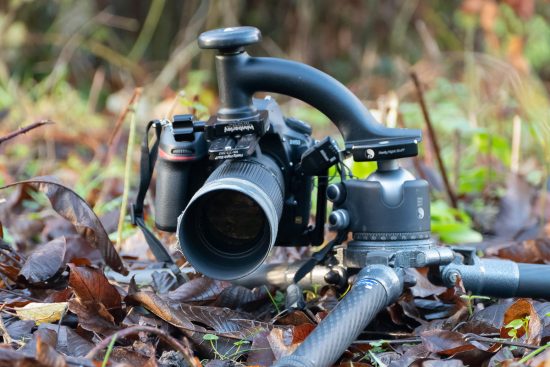
D850 with 200mm, RRS BH55 ball head and Wimberley sidekick for low level photography
Bokeh
No discussion on a lens is complete without discussing Bokeh. The 200mm micro is definitely not a bokeh king. The 9 bladed diaphragm with straight blades can make for ugly out of focus highlights. Pleasing background bokeh can be achieved with some luck, careful framing or by working at F/4.
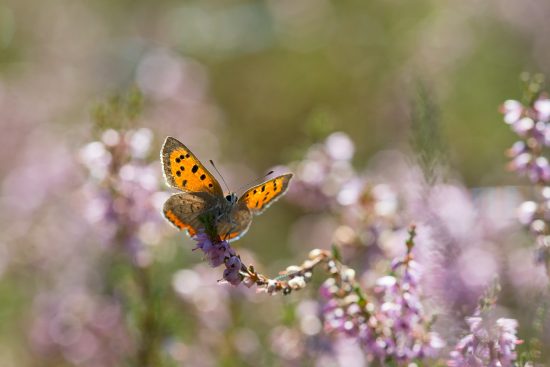
Small copper (Lycena Phlaeas), National park Hoge Veluwe, Netherlands. D800E, F/8 1/250s, ISO 200.
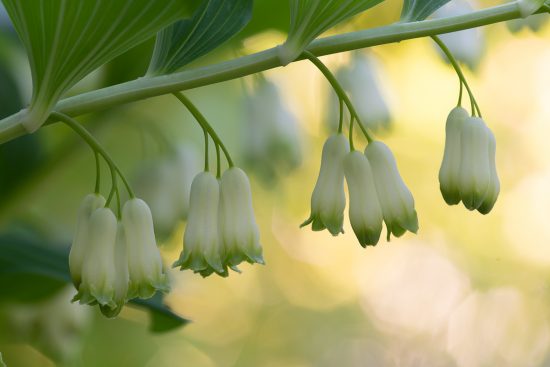
Solomon’s seal (Polygonatum multiflorum), Backyard. D850, F/9, 1/2.5s ISO 64.
Alternatives
There are many macro objectives on the market for Nikon F mount. The list below is incomplete I’m sure. I haven’t used most of these lenses so can’t comment on their quality.
Nikon: 40mm (DX) 60mm, 85mm (DX) and 105mm. For what I do these lenses are too short. I do own the 60 but rarely use it. There are aftermarket collars for the 105mm.
Tamron: 60mm F/2, 90mm F/2.8, 180mm F/3.5 (the 180 has a tripod collar).
Zeiss: 100mm F/2.8 that by all accounts is excellent.
Tokina: 100mm F/2.8.
Sigma: 105mm, 150mm and 180mm (all F/2.8). The 180 has a tripod collar.
Laowa: 60mm F/2.8 that goes to 2:1. (In addition to the wonderfully exotic 24mm F/14 probe lens, a 15mm F/4 that can reach 1:1 with the subject almost touching the front lens and has shifting capability and finally a 25mm F/2.8 for reproduction ratios of 2.5 – 5:1)
Laowa will release a 100mm F/2.8 with a maximum reproduction ratio of 2:1 and Irix a 150mm F/2.8 that goes to 1:1. Both are manual focus only and will have tripod collars.
Other ways to get close
There are of course many other ways to achieve close focus; extension rings, bellows, close up lenses. If you’re an occasional macro photographer or want to achieve some special effect this can work quite well and be fun.
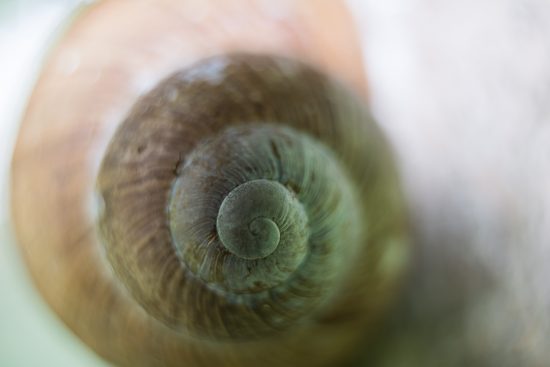
House of edible snail (Helix Pomata), backyard. 35mm with 20mm extension ring, D850, F/3.5, 2s ISO 64.
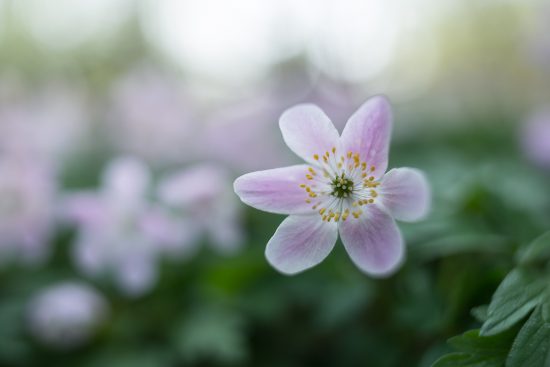
Wood Anemone (Anemone nemorosa), Netherlands. 35mm with 12 mm extension ring, D800E, F/2.8, 1/100s ISO 100.
The next generation?
This lens was introduced in 1993 and despite some rumours there is no clear indication that a successor is on its way. It is an expensive, heavy special purpose lens that is produced in limited numbers. On the other hand, 25 years between iterations is extremely long and there are has been great progress in optics design AF capability and VR. A successor should, in my opinion, have the following characteristics (let’s hope Nikon is listening and planning a successor):
Focal length: At least 150 mm, preferably (to me) 180 or 200 mm. At 1:1 the 200mm micro is really a 100 mm lens, so if the Nikon engineers could figure out a way to achieve close focus without reducing focal length, a 150mm would probably be fine.
Aperture: 2.8 would be nice and make the lens more suitable for general purpose photography, but keeping the lens as light as possible is also important.
Diaphragm: Rounded blades please and as many as you can so that we loose the octagonal highlights and get nice round blurry background balls
Focus: AF-S of course, To make the focus stacking feature on D850 and Z cameras work, for usability on the FtoZ converter and for close up action photography. The slow AF on the current lens severely limits the options for this kind of photography.
VR: Yes please, for general purpose photography and for active insects and other small critters.
Teleconverters: Compatibility with the excellent TC14E III would be fun to increase reach for shy critters.
Tripod collar: Essential with a sturdy foot, good locking and stability.
Image quality: Excellent of course. While I am very happy with the image quality of the 200 mm It may be at its limit for a camera with small pixels such as D850, D500 and Z7. The incredible sharpness of modern lenses shows there is probably some room for improvement. Contrast could probably be improved as well.
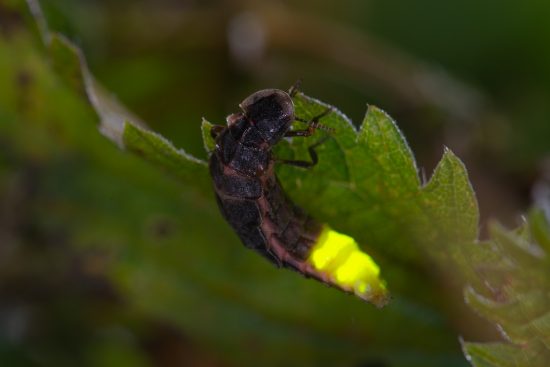
Common glow-worm (Lampyirs noctiluca), D800E F/16 4s ISO 200, R1C1 flash set, SB600 as backlight
F or Z?
The Z system is made for macro, focus peaking, tilt screen, no mirror slap. Thus far I’ve resisted the temptation to go mirrorless but if the next generation of this lens has a Z mount I would immediately buy a Z7 and probably be very happy with the combination. On the other hand, if Nikon is serious about keeping the F mount alive it would make sense to release such a specialised lens in F mount.
About the author
Elbert-Jan Achterberg has been taking nature pictures since he was about 12, some 37 years ago. He is the owner of a technical consultancy for Solar PV installations in the Netherlands. Website (under construction of course): http://www.achterbergbv.nl/fotografie/
